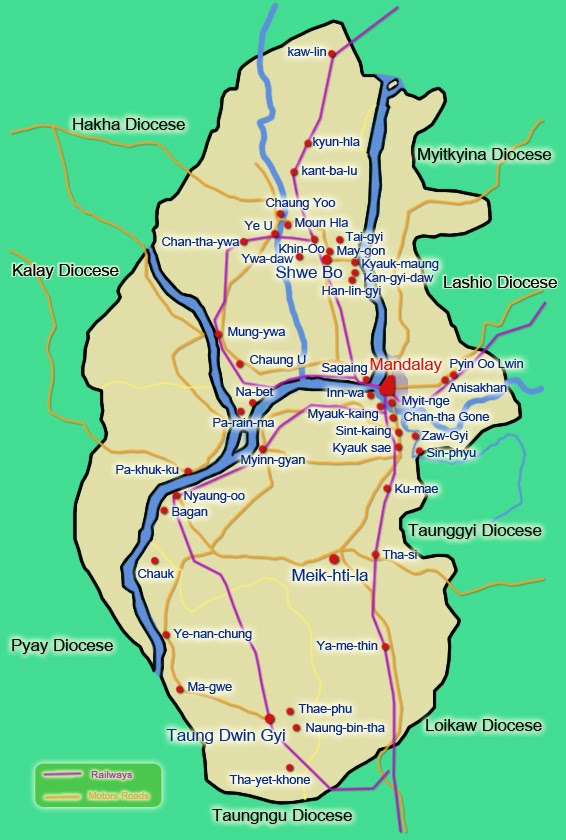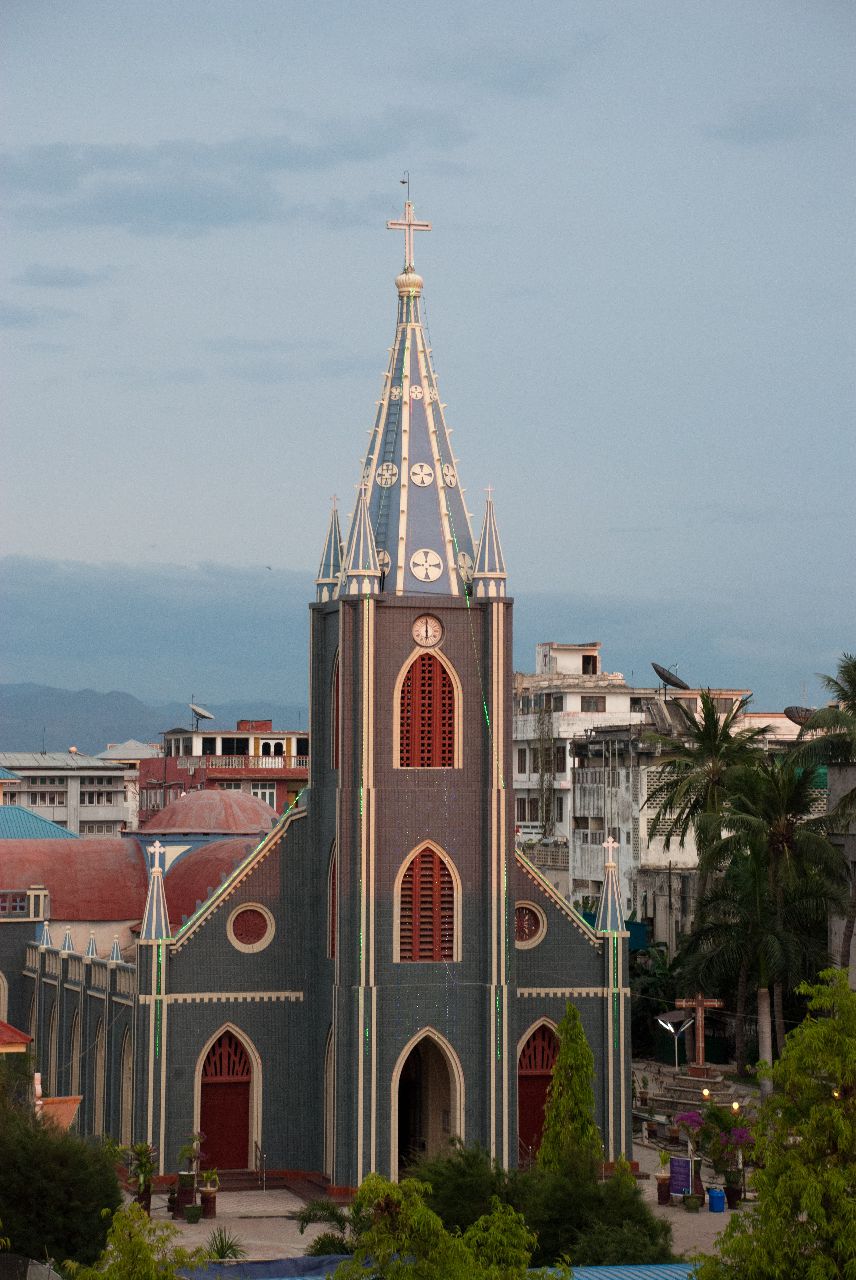
Myanmar, after the capital, Yangon. Mandalay is remarkable for being at the heart of Burmese-Buddhist culture. Catholic Christianity has always struggled to flourish in an enviroment that is so strongly Burmese and so strongly Buddhist. Even today the Archdiocese of Mandalay has only about 20,000 Catholics in an overall population of about 15 million people.
Even so, traces of Christianity in the greater Mandalay area can be traced back as far as the 1280's. In Bagan, then a flourishing kingdom, there are frescoes containing crosses and some Latin and Greek words.
It was only in the 1500's, with the opening up of trade between Europe, especially Portugal, and the various kingdoms of Myanmar, that Christians -both elerical and lay- began to arrive in any numbers. Many of the present Catholics in Mandalay trace their heritage back to this period and its Portuguese influence.
Successive generations of missionaries arrived, sometimes welcomed, sometimes rejected. In the 1700's it was mostly the Barnabite Priests who came to the Mandalay area. They were remarkably creative in their efforts to reach out to the local population, some of them excelling in their study of the Burmese Language and the religious language of Buddhism, Pali.
In the 1800's there was brief period wherethe mission in the Mandalay area was entrusted to the Oblates of the Blessed Virgin Mary. By the mid-1800's there was quite a strong French political influence around Mandalay. At the same time the Paris Foreign Mision Society (M.E.P) assumed responsibility for Mandalay area.
This French political and economic interest in the Mandalay area generally, and the royal Court in particular, was one factor in the British invasion and annexation of Northern Burma in the 1850's. For the British, Mandalay was administered from India. Today many Catholics in the Mandalay area are of South Asian descent, their ancestry mostly dating from this period. ( It also acconts for a sizeabble Muslim population.)

By 1870 Mandalay was a separate vicariate, led by successive Bishops of the Paris Foreign Mission Society. Various Religious Congregations of both men and women also began to assist in the mission of the diocese - mostly in education and health care and, the case of the Salesian Fathers (from the 1930's), in parochial work.
The area of the Mandalay Vicariate suffered greatly during the Second World War, especially from the Japanese invasions. In 1942 the city was devastated by bombs. Together with all the people of Mandalay the Catholic Church and its institutions suffered enormously. Out of the ashes emerged new life.

In 1954, Monsignor Joseph U Win was the first of the indigenous Priests to be ordained a Bishop. On January 1, 1955, the Vicariate of Mandalay became an Archdiocese, as did Yangon, marking the beginning of an indigenous hierachy in Myanmar. Various Suffragan Dioceses and Vicariates were to develop.
The 1960's were to see further drastic changes in the local Mandalay Church. As foreign missionaries were sent home and "their"enterprises confiscated or nationalized, the local clergy and laity were to assume full responsibility for the local Church. The local Church was also unavoidably isolated from much contact with the wider, international Catholic Church.
Only very resently has the local Mandalay Archdiocese been able to communicate more freely with the wider Catholic world. More recent Religious Congregations are beginning to arrive, lay leadership is developing among newly developed pastoral plans and the social development projects for the local people, especially the poor, are gradually able to be implemented.
Any development in this diocese will always have to be in the context of an interreligious dialogue, since, even as far back as those. Bagan historical roots of the 1280s,this diocese is embedded in the heartland of Burmese - Buddhist culture.
Vision StatementAn Evangelizing Community of active and mature believers,built on Gospel values, striving together towards a holistically developed society in harmony with different faiths and cultures.
Mission StatementThe motivating force of the Archdiocese of Mandalay is to be disciples and witnesses of Christ and to live the fullness of life. Therefore, we, the Archdiocese of Mandalay, commit ourselves to do the following for the benefit of the people of the Archdiocese: Living the Word of God by a life of prayer that is nourished by the Sacraments; Providing integrated human and religious formation programmes for clergy, religious and laity; Creating opportunities for collaboration and dialogue with other faiths and cultures so as to promote mutual understanding and harmony and an inculturated way of life; Providing formal and informal education and animation in all areas to the needy; Uplifting the quality of life, especially of the poor, in collaboration with all people of good will. Objectives
Objectivesi. Animating people for active cooperation and Solidarity
1.1. To strengthen religious instruction 1.2. To provide opportunities for people to discus issues and promote dialogue.
ii. Tofosterstrongmissionaryspirit2.1. To provide training and formation for missionary works 2.2. To witness Christ in one’s own way of life.
iii. Alleviating poverty among the poor3.1. To create jobs 3.2. To provide animation programs 3.3. To conduct community based projects 3.4. To promote solidarity 3.5. To provide formal and informal education.
iv. Lifting up the standard of education in the Archdiocese4.1. To promote communities their interest and value on education 4.2. To create opportunities for education 4.3. To provide support for higher education to the needy families.
v. To build capacity and skill5.1. To provide capacity building programs 5.2. To provide facilities for capacity building programs 5.3. To send potential and outstanding person for further study 5.4. To provide consultancy service and information on available opportunities for jobs and capacity building.